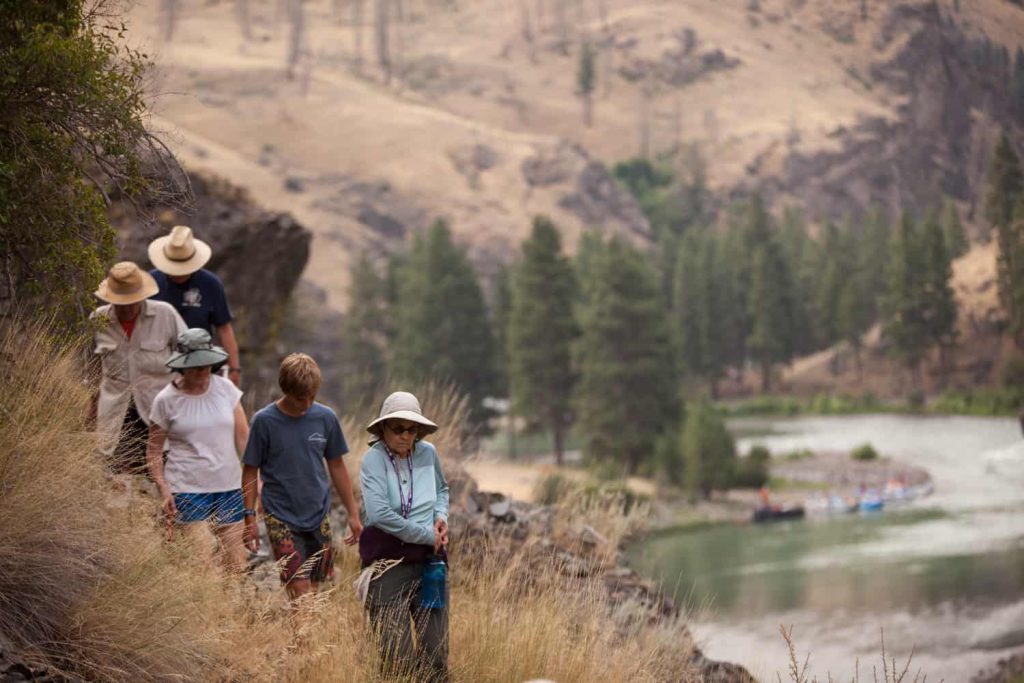The Frank Church River of No Return Wilderness, or “the Frank Church” for short, is one of the largest wilderness areas in the lower 48, second only to Death Valley. Its 2.4 million acres are a gem of preserved green trees and pristine clear waters; a sanctuary for a wide variety of birds, fish, and mammals.

Senator Frank Church and Wilderness
Frank Church himself was a senator and environmentalist from Idaho. He grew up in Boise and earned a law degree from Stanford University. He was the floor sponsor for the 1964 Wilderness Act. The term “wilderness” was legally defined as, “an area where the earth and its community of life are untrammeled by man, where man himself is a visitor who does not remain.” He was also the sponsor of the 1968 Wild & Scenic Rivers Act which prevents rivers with high recreational, fish & wildlife, or scenic value from being dammed or otherwise modified by human activity. Frank Church can be credited for helping in the preservation of over 200 rivers around the U.S. today.
The name of this wilderness area is two-fold. The Main Salmon River was originally referred to as the “River of No Return” in reference to the early settlers who used the river to carry goods, but it was found that there was no way to move back upstream due to the strong current of the river and the steep canyon walls. In 1984, Senator McClure asked Congress to change the name of this area to honor Frank Church, just 1 month before Church’s death at age 59 to pancreatic cancer, now officially named “The Frank Church-River of No Return Wilderness.”

Middle Fork and Main Salmon Rivers
Flowing through the heart of the Frank Church are the Middle Fork and Main Salmon Rivers. The Main Salmon flows through one of the deepest in North America, even deeper than the Grand Canyon of the Colorado. But unlike the Grand Canyon’s towering sheer walls, it has a variety of landscapes along framing the water: grassy bluffs, large wooded areas, solitary crags, and rock slides. The Salmon River Mountains are spread across the wilderness area. The Bighorn Crags, East of the Middle Fork, form a jagged series of summits, with at least one mountaintop over 10,000 feet, surrounding 14 beautiful clearwater lakes.
Climate in the Frank Church-River of No Return Wilderness
The climate of the Frank Church River of No Return Wilderness is generally dry in the summer, with annual rainfall only reaching 15 to 17 inches in the eastern and southern regions, and as low as 7 to 10 inches along the Main Salmon River. Snowfall contributes to more than half of the total precipitation in elevations above 5,000 feet. Annual snowfall varies greatly, with the average anywhere from 50 inches to 400+ inches in the wettest mountain areas, depending on the year.

Today the Frank Church River of No Return Wilderness is enjoyed by backpackers, horsepackers, whitewater rafters and kayakers. Despite the 296 maintained trails comprising 2,616 miles worth of hiking, there are still another 1.5 million acres that have no trails. Small planes are permitted to land on primitive airstrips that were created before the wilderness designation. Our favorite way to see the Frank Church is via the Middle Fork of the Salmon River, camping alongside its banks and hiking along the river.

